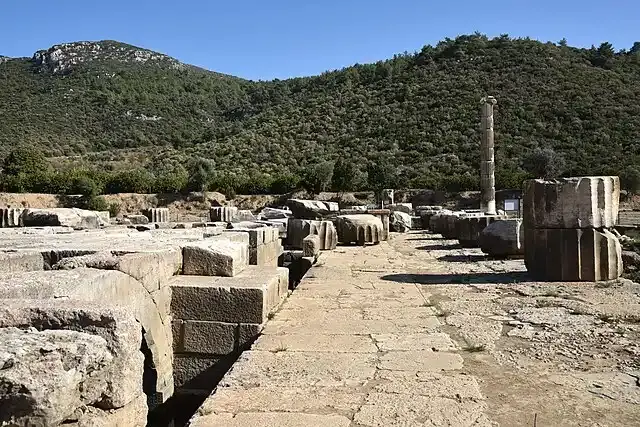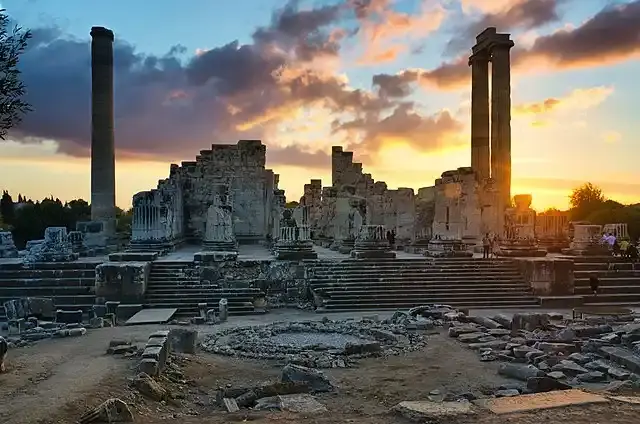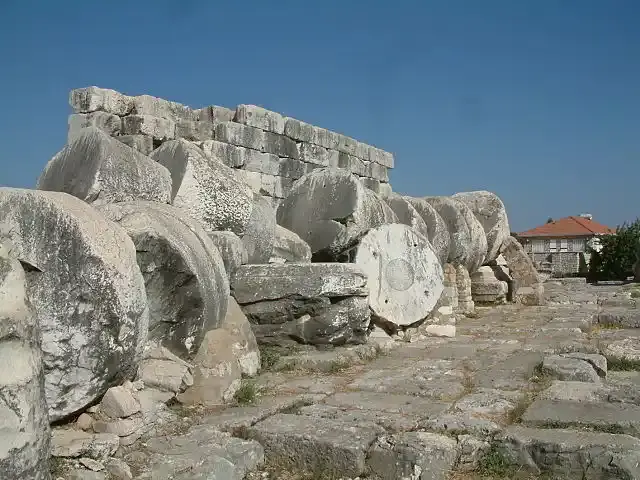The remains of the Temple of Apollo in Turkey ... 2000 years of history

The Temple of Apollo is located on the southern coast of the Turkish shores, specifically in the city of "Side" which is located in Antalya province, one of the most tourist places in Turkey and the world ... The capital of the province is the city of "Antalya" dating back more than 2150 years, Antalya or "Italy" as it was called in the past, is one of the most visited cities in the world and of course there are several reasons for this, you find those who love the sea, sand and sun, those who harmonize with the picturesque beauty of nature, and those who love the history and monuments that crowd Antalya, where they can find dozens of options between the Mediterranean coast, and the surrounding Taurus Mountains.
Recommend
Show key points
- The Temple of Apollo, located in Side on the southern coast of Turkey's Antalya province, is a stunning example of Roman architecture built around 150 AD.
- Antalya is a historically rich and highly visited region that offers breathtaking natural beauty and numerous ancient monuments from various civilizations.
- The Temple of Apollo, dedicated to the god of light and arts, features towering white columns and sits beside the harbor as a symbolic guardian of the ancient port city.
- ADVERTISEMENT
- Didim, also known as Didyma, was home to another Temple of Apollo, which was destroyed by the Persians but later revived by Alexander the Great and the Seleucids.
- In 303 AD, the Temple of Apollo was closed after its priestess supported persecution of Christians, marking the decline of pagan temples under Emperor Theodosius I.
- Visitors to the Temple can explore its architectural elements such as the Naos and the Chrysmographion room, as well as marvel at discoveries like the Medusa head.
- The temple complex also includes a purification well, circular altar, and the Holy Road once lined with ornate statues, remnants of which are now housed in the British Museum.
Antalya province and the monuments of ancient civilizations
There are many historical monuments in Antalya province and they belong to different civilizations, including what dates back to the Lycian civilization such as the ancient city of "Patara", which is filled with historical fingerprints in every corner of it, and Antalya is considered one of the most important medieval ports in the eastern Mediterranean, and it has some monuments from the Seljuk period, but we will go back in time for more than that ... We will go back to ancient Roman times where there was a thriving city on that land called "Side", which is considered one of the important stations in the journey of St. Paul and an important port city belonging to the Greco-Pamphilian civilization. It's truly an impressive historic site with its magnificent buildings, and as you move a little north from Berg, you'll reach one of the best preserved ancient theatres in the world, the old Aspendos Theatre. Today we will explore the hidden aspects of the ancient history of one of the oldest monumental buildings in Antalya... It is the Temple of Apollo, or "Temple of the Priestess of Apollo" as it was once called.
What distinguishes the Temple of Apollo?

The Temple of Apollo is one of the most elegant ancient monuments, sometimes called the "side temple of Apollo". The temple was named "Apollo" after one of the main gods in the city of "Side", known as the god of light, beauty and art, and it is a heritage worth seeing in Antalya with its wonderful history and archaeological columns. The Temple of Apollo is believed to have been built during the long peace process of the Roman Empire, in 150 AD. Located in the center of Side Old Town, the temple displays one of the most beautiful examples of the architectural elegance of ancient Rome. The Temple of Apollo, which has great beauty and reflects warm sunlight on what remains of it, was built next to the harbor as proof that the port of the ancient side was entrusted to the gods. You will fall in love with the sunset that you will see through the huge white columns of the Temple of Apollo in all its splendor.
Twin temple of Apollo and Artemis

Net-Didima (now Didim) is an important religious center, and the residence of the priestess of Apollo. The stunning temple of Apollo here was once the second largest temple in the ancient world; with 122 columns, just five fewer than Artemis. Since the latter has only one column standing today, visiting Didima really helps travelers visualize the lost grandeur of the Temple of Artemis as well. Although the site is largely in ruins, its size is still staggering and there are still two original corners of the site.
Destruction of the temple of Apollo by the Persians
In Greek, Dididima means "twin" (here, referring to the twin brothers Apollo and Artemis). The priestess of Apollo of Didima had significance second only to the priestess of Delphi. Although it was destroyed by the Persians in the early fifth century BC, Alexander the Great reactivated it in 334 BC, and about 30 years later, the Seleucid rulers planned to make it the largest temple in the world. However, it was never completed and the Temple of Artemis received the largest temple in the ancient world instead of Apollo.
Closure of the Temple of Apollo

In 303 AD, the priestess of Apollo allegedly supported the cruel persecution of Christians by Emperor Diocletianus – the last such crackdown, as Emperor Constantine converted to Christianity shortly thereafter and turned the Roman Empire into an ecclesiastical state. The unpopular priestess was silenced by Emperor Theodosius I (r. 379–395), who closed the Temple of Apollo, and also closed other pagan temples such as the Temple of Delphi.
Parts and rooms of the Temple of Apollo

Upon entering the temple of Apollo, you can climb the 13 wide steps of the temple to marvel at the thick and towering columns. Behind the temple terrace is a room called "Chrysmographion", where the interlude poems are magnificently inscribed on the entrance to the room. The covered slopes from the balcony lead to an internal building called (Naos), where the priestess of Apollo used to enter it after drinking from the water of the Holy Spring, accessible to that room by two vaulted and two slope corridors.
Directly east of the temple there is a well called the "Well of Purification", and next to this well there is an altar called the "Circular Altar" on which the priestess visitors made their sacrifices. You can't miss the huge legendary head of Medusa found by an American-Turkish archaeological expedition, the head of Medusa was found near the entrance to the Temple of Apollo which is believed to have been part of an almost human-length stone plaque that was located at the entrance to the Temple of Apollo above the outer row of columns. If you look to the East, you will find the padded Holy Road, which was replete with ornate statues that were transferred to the British Museum in 1858.
Do not forget to bring a hat and sunglasses with you to enjoy the sight of the Temple of Apollo, where there is little shade.








